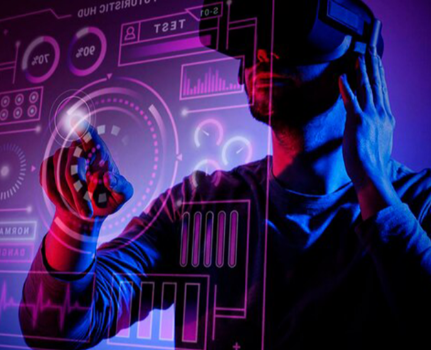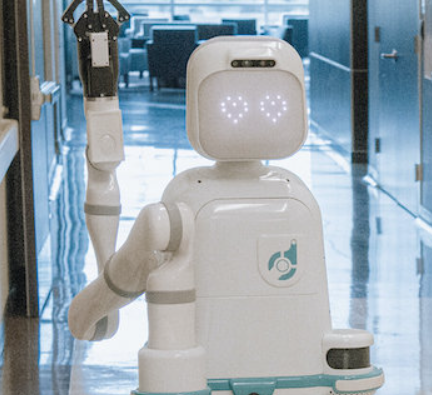
As we approach 2025, robotics is poised to enter a new era defined by smarter systems, seamless collaboration, and deeper integration into everyday operations. Rapid progress in artificial intelligence, mobility, and sensor technologies is pushing robots beyond factory floors and into healthcare, logistics, and more. Let’s take a closer look at the upcoming robotics trends that are set to redefine industries and shape the way we live and work.
Smarter Robots Through Advanced AI
Robotics and artificial intelligence are becoming increasingly intertwined. By 2025, robots will be equipped with enhanced AI-driven capabilities that go beyond simple programming. These systems will be able to understand natural language, interpret complex instructions, and even make independent decisions based on real-time data. Instead of relying on lines of code, users will be able to control robots through intuitive, conversational interfaces, streamlining their use across multiple domains.
The Rise of Collaborative Robotics
Collaborative robots—better known as cobots—are designed to work safely alongside humans. As their design improves, they will become more intuitive to operate and easier to deploy across production lines. Equipped with advanced safety features, cobots will detect human presence and adjust their actions accordingly, minimizing risk and enhancing teamwork. Their adaptability also means businesses can scale operations quickly without extensive retraining or downtime.
Autonomous Mobile Robots in Logistics
Autonomous mobile robots (AMRs) are transforming logistics operations by independently navigating complex warehouse layouts. Thanks to sophisticated mapping and obstacle-avoidance systems, these robots can transport goods, manage inventory, and operate continuously with minimal oversight. As they learn from their environments, AMRs will refine their movements, boosting accuracy and reducing bottlenecks in supply chains.
Soft Robotics for Delicate Handling
Soft robotics is emerging as a critical innovation for industries that require gentle touch and flexibility. These robots, built with pliable materials, are capable of handling fragile items without causing damage. They are particularly suited for applications in electronics assembly and food packaging, where precision and delicacy are essential. Their organic-inspired movements also open the door to new methods of automation that traditional rigid robots cannot achieve.
Next-Generation Surgical Robotics
In healthcare, robotic systems are advancing surgical procedures through minimally invasive techniques and superior precision. These medical robots assist surgeons in performing intricate tasks with enhanced control and reduced risk. Patients benefit from shorter recovery times and improved outcomes, while hospitals can provide more consistent, high-quality care. The integration of AI into surgical robotics also allows for predictive analytics and better decision support during procedures.
Exoskeletons for Strength and Support
Robotic exoskeletons are becoming practical tools for boosting human strength and reducing fatigue. In manufacturing, workers can use these wearable systems to lift heavy loads with less physical strain, increasing efficiency while reducing the risk of injury. In rehabilitation, exoskeletons assist patients in regaining mobility after injury or illness. As designs become more lightweight and affordable, they will see greater adoption across industries focused on physical labor and recovery.
Swarm Robotics for Coordinated Action
Swarm robotics refers to networks of small, simple robots that collaborate to complete complex tasks. Inspired by natural systems like ant colonies, these robotic swarms excel in environments that are too dangerous or unpredictable for humans. Whether responding to natural disasters or exploring remote locations, these systems offer a scalable and adaptive approach to problem-solving. Their ability to operate collectively ensures greater efficiency in emergency scenarios.
Breakthroughs in Sensor Technology
Advanced sensor systems are a cornerstone of the next wave of robotics. With improved vision, tactile sensing, and environmental awareness, robots can now interpret their surroundings with greater depth and precision. This allows them to perform more sophisticated tasks, from autonomous driving to intricate medical diagnostics. High-performance sensors also enhance safety and adaptability, making robots more responsive and reliable in real-world conditions.
Why Optics Matter in Robotics
Robust visual input is fundamental to robotic functionality, and the choice of lens plays a vital role. High-quality optics ensure that robots can detect fine details and operate effectively across various environments. Lenses such as those in the ViSWIR series are tailored for next-generation imaging sensors, offering stable performance across visible and infrared spectrums. These lenses are particularly useful in UAVs, inspection systems, and remote sensing applications.
Equally important are plug-and-play lens systems, which simplify setup while maintaining exceptional image quality. Products like the LensConnect Series are widely adopted across industries for their ease of integration and versatile functionality. From automated inspection in factories to surveillance in public spaces, these lenses provide the visual clarity necessary for precise robotic operation.
A New Chapter in Human-Robot Collaboration
The trends shaping robotics in 2025 go far beyond improved machinery—they signal a shift toward deeper collaboration between humans and intelligent systems. With robots becoming more perceptive, adaptive, and accessible, their impact will extend into every facet of society. This ongoing transformation promises not only greater efficiency and innovation but also a more inclusive future where technology enhances human potential across the board.












